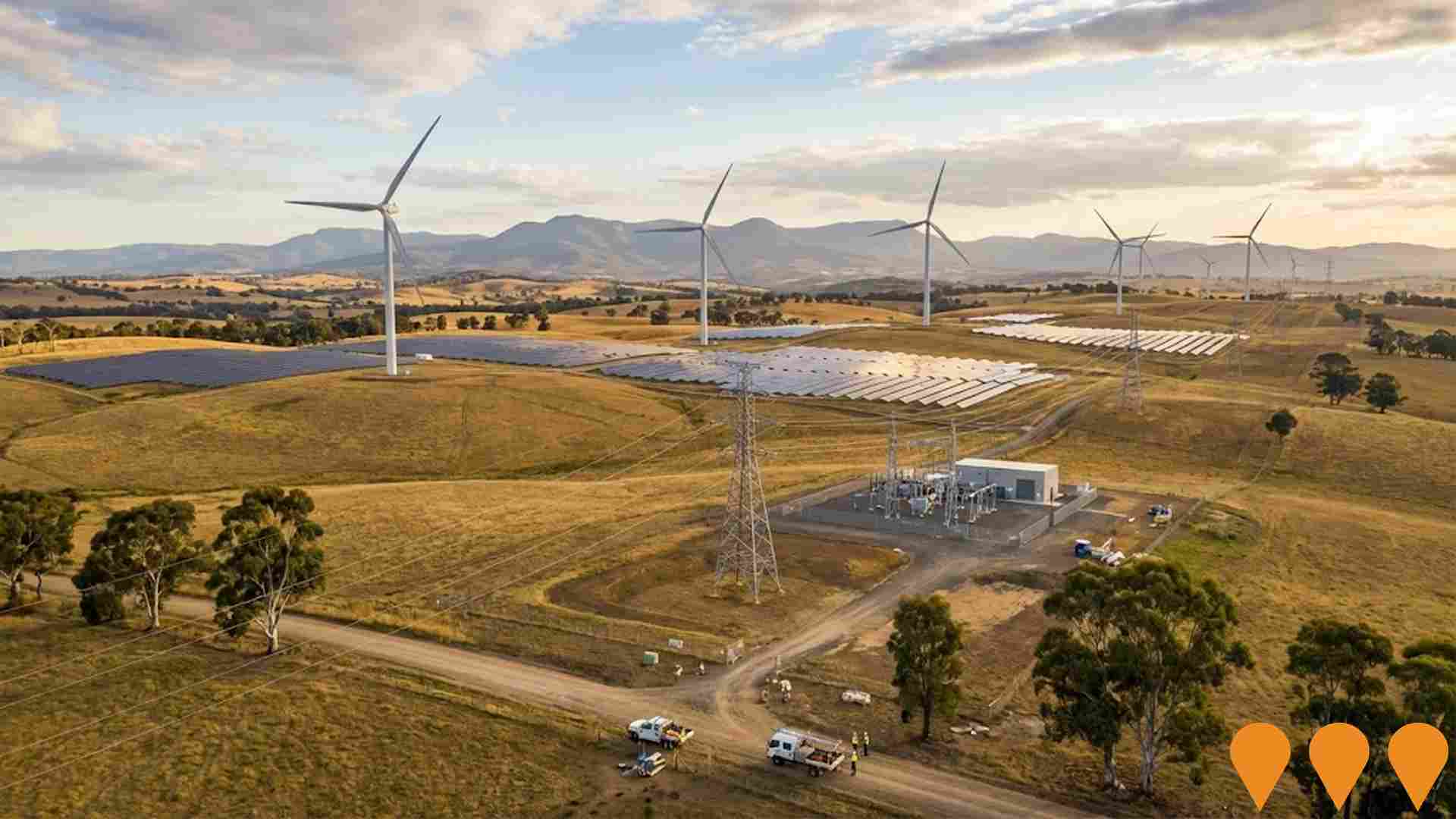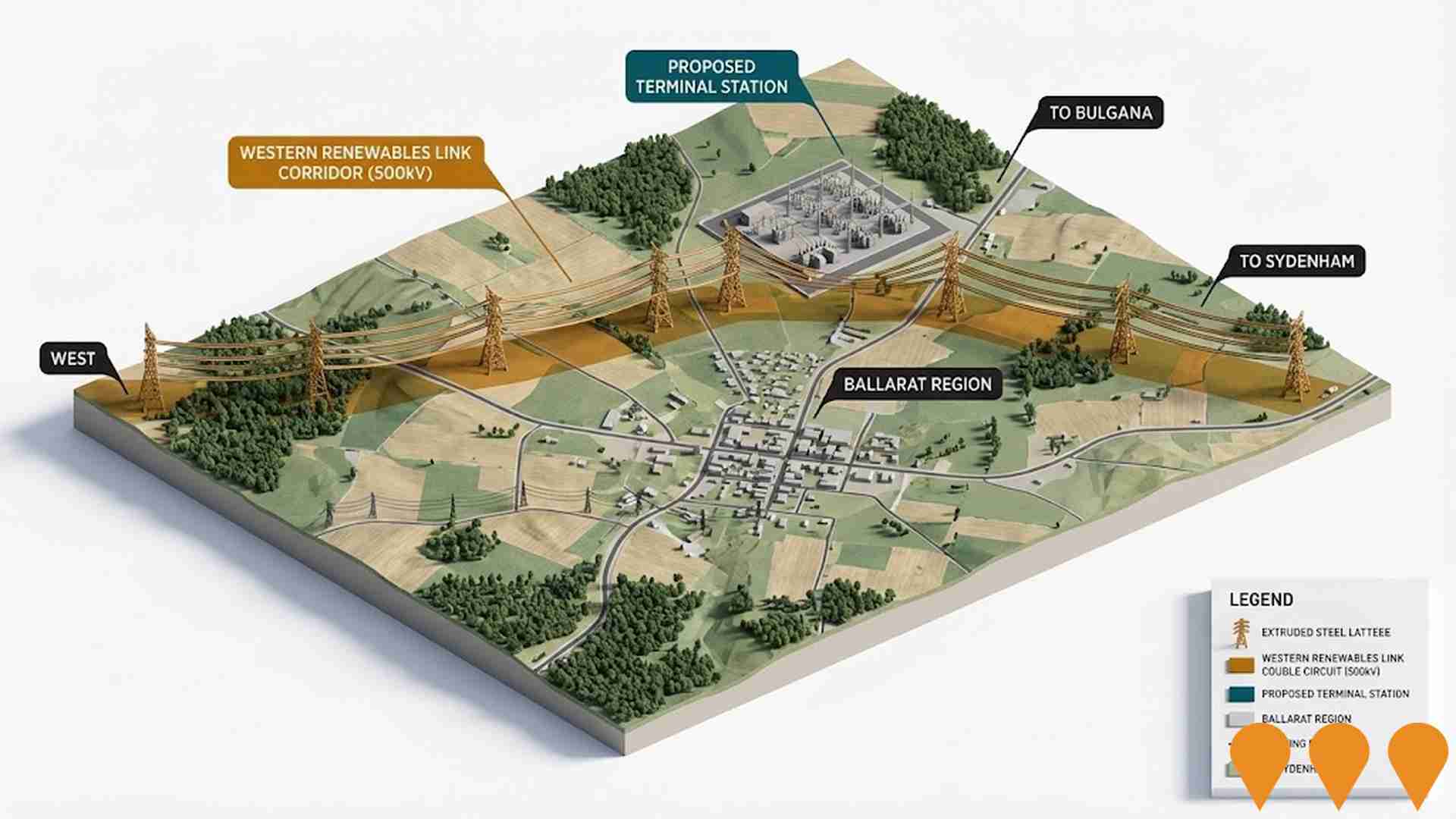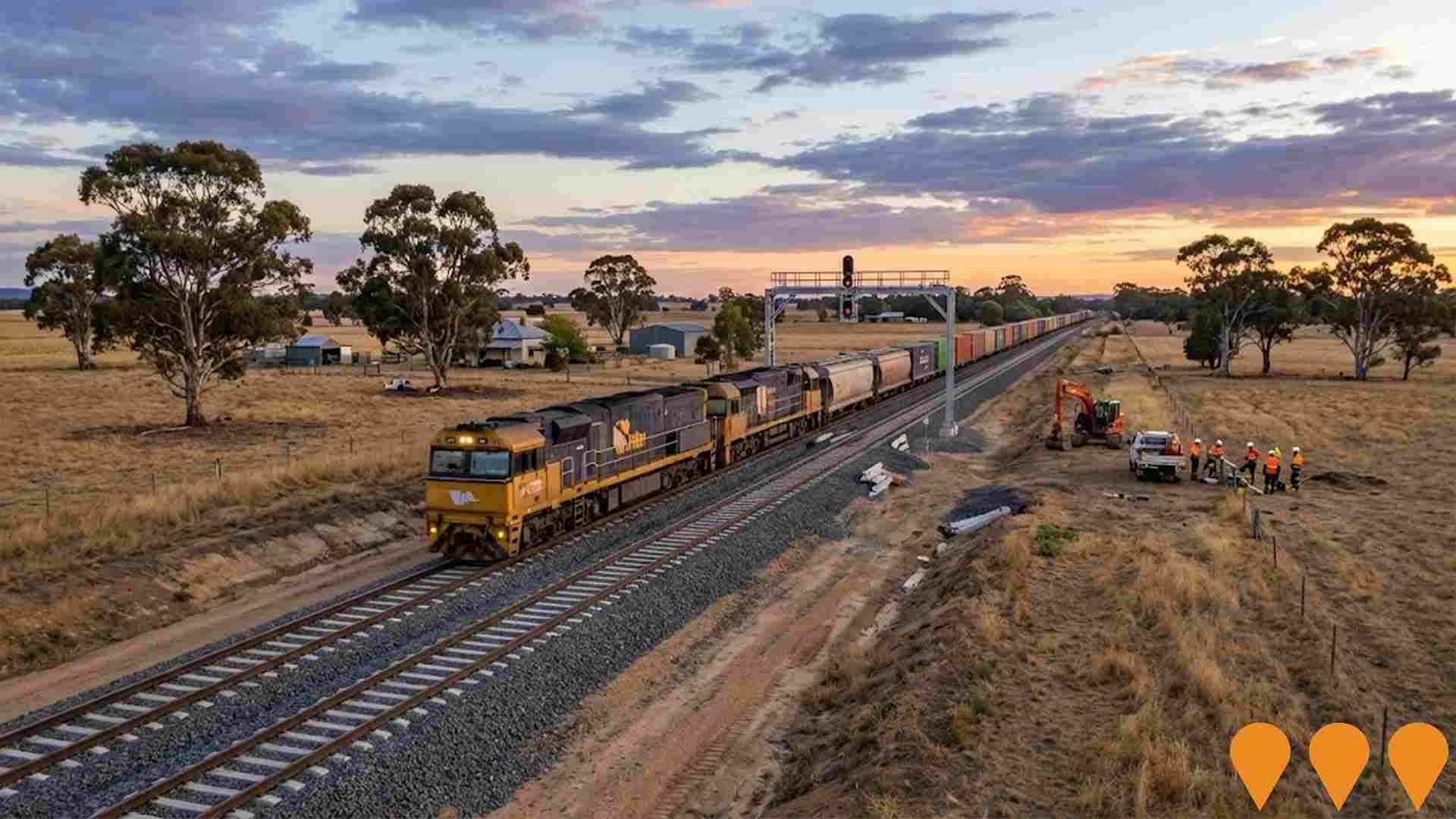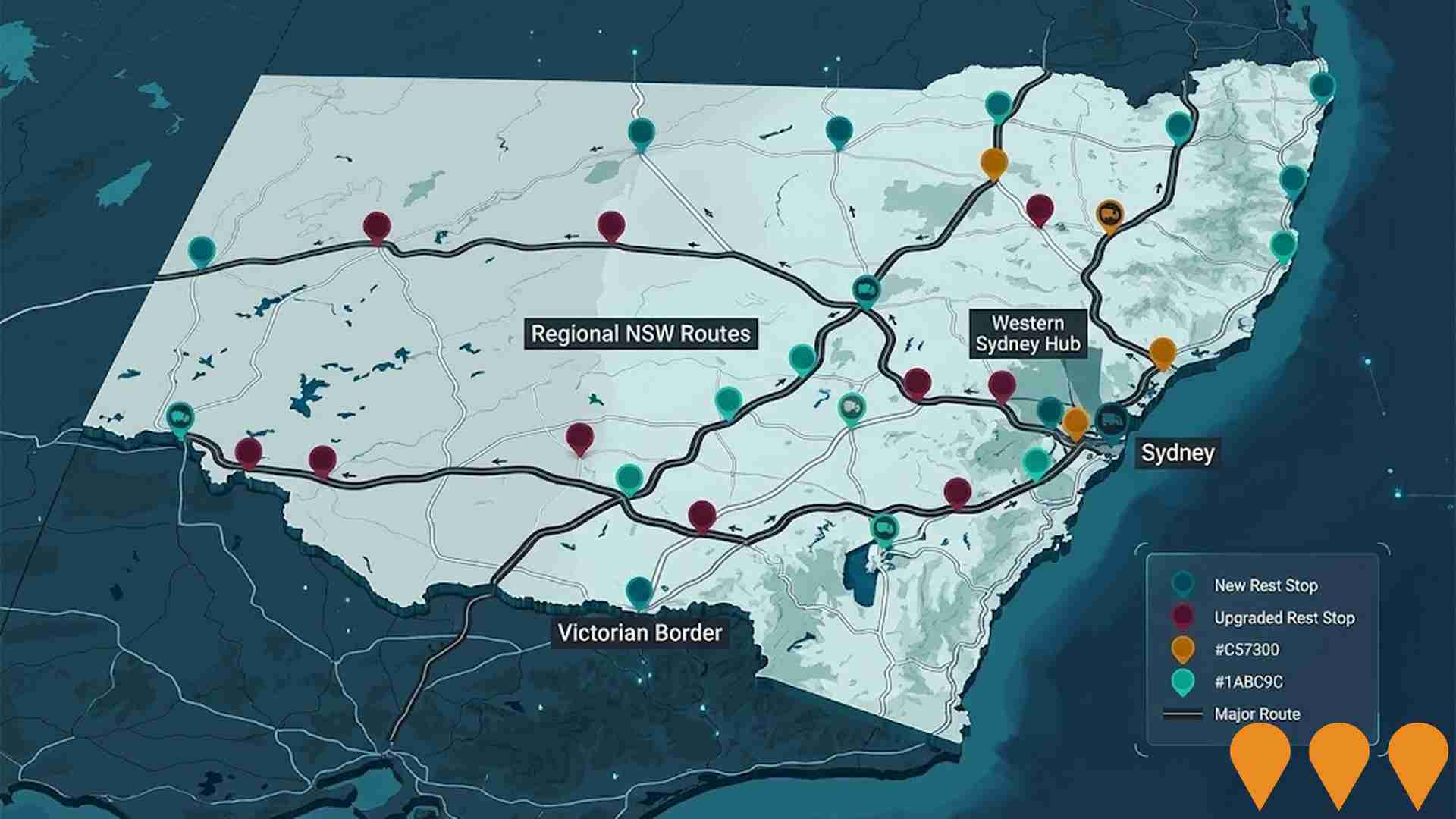Chart Color Schemes
est. as @ -- *
ABS ERP | -- people | --
2021 Census | -- people
Sales Activity
Curious about local property values? Filter the chart to assess the volume and appreciation (including resales) trends and regional comparisons, or scroll to the map below view this information at an individual property level.
Find a Recent Sale
Sales Detail
Population
An assessment of population growth drivers in Ararat Surrounds reveals an overall ranking slightly below national averages considering recent, and medium term trends
Ararat Surrounds' population is approximately 3,218 as of August 2025. This figure represents an increase of 14 people since the 2021 Census, which recorded a population of 3,204. The increase is inferred from the estimated resident population of 3,178 in June 2024 and the addition of 23 validated new addresses since the Census date. This results in a population density ratio of 0.80 persons per square kilometer. Ararat Surrounds' growth rate of 0.4% since the 2021 census exceeded that of its SA3 area (-0.6%) and SA4 region, but remained modest overall. Overseas migration contributed approximately 82.0% of population gains in recent periods.
AreaSearch uses ABS/Geoscience Australia projections for each SA2 area, released in 2024 with a base year of 2022. For areas not covered by this data, AreaSearch employs the VIC State Government's Regional/LGA projections from 2023, adjusted using a method of weighted aggregation of population growth from LGA to SA2 levels. Growth rates by age group are applied across all areas for years 2032 to 2041. Based on these projections, Ararat Surrounds is expected to increase by approximately 267 persons by 2041, with an overall increase of about 7.0% over the 17-year period. This anticipated growth is just below the median for regional areas nationally.
Frequently Asked Questions - Population
Development
Residential development activity is lower than average in Ararat Surrounds according to AreaSearch's national comparison of local real estate markets
Ararat Surrounds has recorded approximately 11 residential properties granted approval annually over the past five financial years, totalling 58 homes. As of FY26, 4 approvals have been recorded. The population has fallen during this period, yet housing supply has remained adequate relative to demand, resulting in a balanced market with good buyer choice. New dwellings are developed at an average cost of $528,000, higher than regional norms due to quality-focused development.
This financial year, $9.1 million in commercial development approvals have been recorded, indicating the area's primarily residential nature. Compared to Rest of Vic., Ararat Surrounds maintains similar construction rates per person, preserving market equilibrium consistent with surrounding areas. However, this level is lower than nationally, suggesting market maturity and possible development constraints. All new construction has comprised detached houses, maintaining the area's traditional low density character focused on family homes.
With around 220 people per approval, Ararat Surrounds reflects a low density area. Population forecasts indicate an increase of 227 residents by 2041. Given current construction levels, housing supply should meet demand adequately, creating favourable conditions for buyers while potentially enabling growth that exceeds current forecasts.
Frequently Asked Questions - Development
Infrastructure
Ararat Surrounds has moderate levels of nearby infrastructure activity, ranking in the top 50% nationally
Two projects identified by AreaSearch are likely to impact the area: Western Highway Upgrade - Ararat to Stawell, and Great Western Future Plan 2014-2024. Other notable projects include Western Highway Ballarat to Stawell Upgrade, and Ararat to Maryborough Line Upgrades (Murray Basin Rail Project).
Professional plan users can use the search below to filter and access additional projects.
INFRASTRUCTURE SEARCH
 Denotes AI-based impression for illustrative purposes only, not to be taken as definitive under any circumstances. Please follow links and conduct other investigations from the project's source for actual imagery. Developers and project owners wishing us to use original imagery please Contact Us and we will do so.
Denotes AI-based impression for illustrative purposes only, not to be taken as definitive under any circumstances. Please follow links and conduct other investigations from the project's source for actual imagery. Developers and project owners wishing us to use original imagery please Contact Us and we will do so.
Frequently Asked Questions - Infrastructure
Victorian Renewable Energy Zones
VicGrid, a Victorian Government agency, is coordinating the planning and staged declaration of six proposed onshore Renewable Energy Zones (plus a Gippsland shoreline zone to support offshore wind). The 2025 Victorian Transmission Plan identifies the indicative REZ locations, access limits and the transmission works needed to connect new wind, solar and storage while minimising impacts on communities, Traditional Owners, agriculture and the environment. Each REZ will proceed through a statutory declaration and consultation process before competitive allocation of grid access to projects.

Western Renewables Link
Proposed 190km overhead 500kV double circuit high-voltage electricity transmission line from Bulgana in western Victoria to Sydenham in Melbourne's north-west. The project is currently in the EES public exhibition process (30 June to 25 August 2025).

Western Highway Ballarat to Stawell Upgrade
Multi-billion dollar highway duplication project between Ballarat and Stawell, with 55km already completed between Ballarat and Buangor. The project includes adding two lanes in each direction with central median, upgrading intersections, and building new bridges. Benefits freight movement and regional connectivity including to Maryborough area.

Western Highway Upgrade - Ararat to Stawell
Planning is underway to duplicate the Western Highway between Ararat and Stawell, including adding two lanes in each direction with a central median, upgrading intersections, providing new access points that connect to local roads, and delivering a bypass to the north of Great Western. The scope also includes new bridge works and safer access along the corridor to improve regional safety and freight efficiency.

Ararat to Maryborough Line Upgrades (Murray Basin Rail Project)
Reopening and subsequent upgrades of the 88 km Maryborough-Ararat freight line (Avoca line) as part of the Murray Basin Rail Project. Works delivered standard gauge, 21-tonne axle loading, new 47 kg rail and ballast, a new passing loop at Elmhurst (mid-2024), and associated junction/signalling upgrades. The line is operational; further signalling works around Maryborough continue under the broader program.

Regional Housing Fund (Victoria)
A $1 billion Homes Victoria program delivering around 1,300 new social and affordable homes across at least 30 regional and rural LGAs, using a mix of new builds, purchases in new developments, renewals and refurbishments. Delivery commenced in late 2023 with early completions recorded; overall fund completion is targeted for 2028.

NSW Heavy Vehicle Rest Stops Program (TfNSW)
Statewide Transport for NSW program to increase and upgrade heavy vehicle rest stopping across NSW. Works include minor upgrades under the $11.9m Heavy Vehicle Rest Stop Minor Works Program (e.g. new green reflector sites and amenity/signage improvements), early works on new and upgraded formal rest areas in regional NSW, and planning and site confirmation for a major new dedicated rest area in Western Sydney. The program aims to reduce fatigue, improve safety and productivity on key freight routes, and respond to industry feedback collected since 2022.

Great Western Future Plan 2014-2024
A 10-year plan developed in partnership with the Northern Grampians Shire Council and the community to guide the future development and growth of Great Western. The plan considers the impact of the Western Highway bypass and aims to enhance the town's village feel, heritage, and tourism potential, particularly around its wineries.

Employment
The labour market in Ararat Surrounds shows considerable strength compared to most other Australian regions
Ararat Surrounds has a skilled workforce with diverse sector representation and an unemployment rate of 2.0% as of June 2025. There are 1,671 residents in work, with an unemployment rate 1.8% lower than the Rest of Vic.'s rate of 3.8%.
Workforce participation is at 59.5%, compared to the Rest of Vic.'s 57.4%. Key industries for employment among residents are agriculture, forestry & fishing, health care & social assistance, and education & training. The area has a notable concentration in agriculture, forestry & fishing, with employment levels at 5.3 times the regional average. Construction has limited presence, with 4.3% employment compared to the regional average of 10.4%.
Between June 2024 and June 2025, the labour force decreased by 4.2%, while employment declined by 3.4%, causing the unemployment rate to fall by 0.8 percentage points. In comparison, Rest of Vic. recorded an employment decline of 0.9% and a labour force decline of 0.4%, with unemployment rising by 0.4 percentage points. Jobs and Skills Australia's national employment forecasts from May 2025 suggest that Ararat Surrounds' employment could grow by approximately 4.8% over five years and 11.0% over ten years, based on industry-specific projections applied to the local employment mix.
Frequently Asked Questions - Employment
Income
Income figures position the area below 75% of locations analysed nationally by AreaSearch
Ararat Surrounds' median income among taxpayers was $46,922 in financial year 2022. The average income stood at $57,268 during the same period. These figures compare to the Rest of Vic.'s median and average incomes of $48,741 and $60,693 respectively. By September 2025, estimated median and average incomes in Ararat Surrounds would be approximately $52,628 and $64,232 based on a 12.16% growth since financial year 2022. According to the 2021 Census, household, family, and personal incomes in Ararat Surrounds ranked modestly between the 27th and 32nd percentiles. In terms of income distribution, 32.3% (1,039 individuals) fell within the $1,500 - 2,999 earnings band, similar to the metropolitan region at 30.3%. Housing costs allowed for retention of 93.3%, but disposable income was below average at the 39th percentile. The area's SEIFA income ranking placed it in the 5th decile.
Frequently Asked Questions - Income
Housing
Ararat Surrounds is characterized by a predominantly suburban housing profile, with above-average rates of outright home ownership
In Ararat Surrounds, as per the latest Census evaluation, 99.2% of dwellings were houses, with the remaining 0.8% consisting of semi-detached properties, apartments, and other types. This is in contrast to Non-Metro Vic., where 93.0% of dwellings were houses and 6.9% were other types. Home ownership in Ararat Surrounds stood at 58.7%, with mortgaged dwellings making up 30.1% and rented ones 11.2%. The median monthly mortgage repayment in the area was $1,083, exceeding Non-Metro Vic.'s average of $1,043. Meanwhile, the median weekly rent figure for Ararat Surrounds was $151, compared to Non-Metro Vic.'s $215. Nationally, Ararat Surrounds' mortgage repayments were significantly lower than the Australian average of $1,863, recorded in June 2021, while rents were substantially below the national figure of $375 for the same period.
Frequently Asked Questions - Housing
Household Composition
Ararat Surrounds has a typical household mix, with a higher-than-average median household size
Family households account for 71.2% of all households, consisting of 27.1% couples with children, 36.3% couples without children, and 7.1% single parent families. Non-family households make up the remaining 28.8%, with lone person households at 27.1% and group households comprising 1.7% of the total. The median household size is 2.4 people, which is larger than the Rest of Vic. average of 2.2.
Frequently Asked Questions - Households
Local Schools & Education
Educational attainment in Ararat Surrounds aligns closely with national averages, showing typical qualification patterns and performance metrics
The area's university qualification rate was 20.4% in 20XX, significantly lower than Victoria's average of 33.4%. Bachelor degrees were the most prevalent at 15.6%, followed by graduate diplomas (2.5%) and postgraduate qualifications (2.3%). Vocational credentials were held by 41.4% of residents aged 15+, with advanced diplomas at 14.5% and certificates at 26.9%. Educational participation was high, with 27.2% of residents enrolled in formal education: 12.0% in primary, 8.0% in secondary, and 1.9% in tertiary education.
Six schools operated within Ararat Surrounds, educating approximately 199 students, with typical Australian school conditions (ICSEA: 1006) and balanced educational opportunities. The mix included five primary and one K-12 school. Local school capacity was limited at 6.2 places per 100 residents compared to the regional average of 13.8, leading many families to travel for schooling.
Frequently Asked Questions - Education
Schools Detail
Nearby Services & Amenities
Transport
Transport servicing is very low compared to other areas nationally based on assessment of service frequency, route connectivity and accessibility
Ararat Surrounds has 16 active public transport stops operating, all of which are bus stops. These stops are served by 16 different routes that together offer 98 weekly passenger trips. The accessibility of these services is limited, with residents on average being located 1542 meters from the nearest stop.
On average, there are 14 trips per day across all routes, which equates to approximately 6 weekly trips per individual stop.
Frequently Asked Questions - Transport
Transport Stops Detail
Health
Health performance in Ararat Surrounds is lower than average with common health conditions somewhat prevalent across both younger and older age cohorts
Ararat Surrounds faces significant health challenges with common health conditions prevalent across both younger and older age cohorts. The rate of private health cover is very low at approximately 48% of the total population (~1,554 people), compared to the national average of 55.3%.
The most common medical conditions in the area are arthritis and mental health issues, impacting 10.5% and 7.5% of residents respectively, while 65.2% of residents declare themselves completely clear of medical ailments, compared to 61.2% across Rest of Vic.. The area has 25.7% of residents aged 65 and over (827 people). Health outcomes among seniors are particularly strong, performing even better than the general population in health metrics.
Frequently Asked Questions - Health
Cultural Diversity
The latest Census data sees Ararat Surrounds placing among the least culturally diverse areas in the country when compared across a range of language and cultural background related metrics
Ararat Surrounds had a lower cultural diversity, with 88.5% of its population being citizens, 90.1% born in Australia, and 98.1% speaking English only at home. Christianity was the predominant religion, making up 46.9% of people in Ararat Surrounds. Notably, Judaism was overrepresented at 0.1%, compared to 0.0% across Rest of Vic..
The top three ancestry groups were Australian (33.5%), English (30.7%), and Scottish (12.6%). Some ethnic groups had notable differences: Maori were overrepresented at 0.6% (vs regional 0.2%), Irish at 9.1% (vs 8.1%), and German at 3.8% (vs 6.6%).
Frequently Asked Questions - Diversity
Age
Ararat Surrounds hosts an older demographic, ranking in the top quartile nationwide
The median age in Ararat Surrounds is 49, which exceeds both the Rest of Vic figure of 43 and Australia's national average of 38 years. Compared to the Rest of Vic average, the 55-64 cohort is notably over-represented at 16.9% locally, while the 15-24 age group is under-represented at 7.4%. This concentration in the 55-64 age bracket is significantly higher than the national figure of 11.2%. Between 2021 and present day, the 75 to 84 age group has increased from 7.0% to 8.8% of the population. Conversely, the 45 to 54 cohort has declined from 13.6% to 12.7%. Looking ahead to 2041, demographic projections indicate significant shifts in Ararat Surrounds' age structure. The 25 to 34 age group is projected to grow by 84 people (32%), increasing from 261 to 346. Meanwhile, population declines are projected for the 85+ and 5 to 14 age cohorts.


